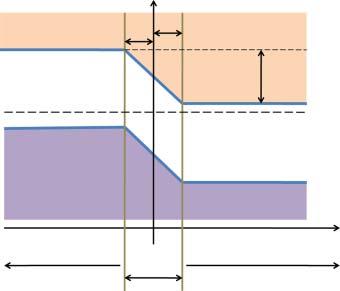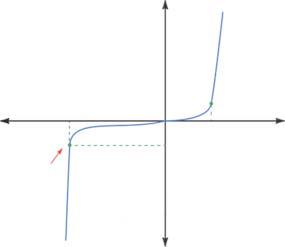PrintableMesoscopicPerovskiteSolarCells
EditedbyHongweiHan,MichaelGrätzel,AnyiMei,andYueHu
Editors
Prof.HongweiHan HuazhongUniv.ofScience& Technology
NationalLaboratoryforOptoelectronics 1037LuoyuRoad 430074Wuhan China
Prof.MichaelGrätzel EcolePolytechniqueFederalede Lausann InstituteofChemicalScience Station6 CH-1015Lausanne Switzerland
Prof.AnyiMei HuazhongUniv.ofScience& Technology
NationalLaboratoryforOptoelectronics 1037LuoyuRoad 430074Wuhan China
Prof.YueHu HuazhongUniv.ofScience& Technology
NationalLaboratoryforOptoelectronics 1037LuoyuRoad 430074Wuhan China
CoverImages: Backgroundimage: ©HongweiHan,HuazhongUniversity ofScience&Technology
Insetimage: ©Niethammer Zoltan/Shutterstock
Allbookspublishedby WILEY-VCH arecarefully produced.Nevertheless,authors,editors,and publisherdonotwarranttheinformation containedinthesebooks,includingthisbook, tobefreeoferrors.Readersareadvisedtokeep inmindthatstatements,data,illustrations, proceduraldetailsorotheritemsmay inadvertentlybeinaccurate.
LibraryofCongressCardNo.: appliedfor BritishLibraryCataloguing-in-PublicationData Acataloguerecordforthisbookisavailable fromtheBritishLibrary.
Bibliographicinformationpublishedby theDeutscheNationalbibliothek TheDeutscheNationalbibliotheklists thispublicationintheDeutsche Nationalbibliografie;detailedbibliographic dataareavailableontheInternetat <http://dnb.d-nb.de>
©2023WILEY-VCHGmbH,Boschstr.12, 69469Weinheim,Germany
Allrightsreserved(includingthoseof translationintootherlanguages).Nopartof thisbookmaybereproducedinanyform–by photoprinting,microfilm,oranyother means–nortransmittedortranslatedintoa machinelanguagewithoutwrittenpermission fromthepublishers.Registerednames, trademarks,etc.usedinthisbook,evenwhen notspecificallymarkedassuch,arenottobe consideredunprotectedbylaw.
PrintISBN: 978-3-527-34958-6
ePDFISBN: 978-3-527-83427-3
ePubISBN: 978-3-527-83428-0
oBookISBN: 978-3-527-83429-7
Typesetting Straive,Chennai,India
Contents
Biography xi Preface xiii
1BackgroundandBasicKnowledgeofPerovskiteSolarCells 1 MariaVasilopoulou,AbdRashidB.MohdYusoff,and MohammadK.Nazeeruddin
1.1Background 1
1.2ThePrincipleofSolarCells 2
1.2.1SiliconSolarCells 2
1.2.2Dye-sensitizedSolarCells 7
1.2.3OrganicSolarCells 9
1.2.4PerovskiteSolarCells 11
1.3TheTypicalStructuresofPSC 13
1.3.1MesoscopicStructure 13
1.3.2Triple-mesoscopicLayerStructure 14
1.3.3RegularPlanarn-i-pStructure 15
1.3.4InvertedPlanarp-i-nStructure 15 References 15
2CharacterizationMethodsandTechnologiesforHalide PerovskiteMaterialsandDevices 19 LukasWagner,DmitryBogachuk,ChengQiu,GayathriMathiazhagan, SalmaZouhair,andAndreasHinsch
2.1Introduction 19
2.2PrintingLayerQuality 19
2.2.1ThicknessMeasurement 19
2.2.1.1Profilometry 20
2.2.1.2SEM 20
2.2.1.3Ellipsometry 20
2.2.2PorosityEstimation 21
2.2.2.1GasAdsorption(BETMethod) 21
2.2.2.2SEM/FIB3DNanotomography 22
2.2.3SheetResistance 23
2.2.3.1Four-pointProbeMeasurement 23
2.2.4ShuntResistanceofUnfilledCell 24
2.3MaterialandCrystalProperties 25
2.3.1X-RayDiffraction(XRD)Analysis 25
2.3.2UV–Vis–NIRSpectroscopy 25
2.3.3RamanShiftSpectroscopy 26
2.3.4ScanningElectronMicroscopy(SEM)andEnergyDispersiveX-Ray Spectroscopy(EDX) 28
2.3.4.1ScanningElectronMicroscopy(SEM) 28
2.3.4.2EnergyDispersiveX-RaySpectroscopy(EDX) 30
2.3.5AtomicForceMicroscopy(AFM) 31
2.3.6ContactAngleMeasurement 32
2.4SpatiallyResolvedSteady-statePhotophysicalMethods 33
2.4.1PhotoluminescenceMicroscopyImaging 34
2.4.2MicroscopicPhotoluminescenceSpectroscopyMapping 35
2.4.3ElectroluminescenceImaging 36
2.4.4Bias-dependentPhotoluminescenceImaging 37
2.4.5Real-timePhotoluminescenceMeasurement 37
2.4.6DarkLock-inThermography(DLIT) 39
2.4.7Light-Beam-InducedCurrent(LBIC) 42
2.5TransientOptoelectronicMethods 42
2.5.1Intensity-modulatedPhotocurrent/PhotovoltageSpectroscopy (IMPS/IMVS) 42
2.5.2TransientPhotocurrent/Photovoltage(TPC/TPV) 43
2.5.3Open-circuitVoltageDecay(OCVD)AnalysisforShunt Detection 44
2.5.4TransientAbsorptionSpectroscopy(TAS) 45
2.5.5Time-resolvedPhotoluminescence(TRPL) 46
2.5.5.1TypicalSetup:Pulsed(Transient)Excitation 46
2.5.5.2AlternativeSetup:Steady-stateExcitation 46
2.5.5.3SomeNotesonSamplePreparation 49
2.5.6NoteontheExtensiontoSpatiallyResolvedMeasurements 50
2.6 I –V Performance:TransientandSteadyState 50
2.6.1 I –V Characterization 50
2.6.2 I –V Hysteresis 51
2.6.3StabilizedEfficiencyMeasurement 52
2.6.4SpectralResponse/ExternalQuantumEfficiency(SR/EQE) 52
2.6.5 V oc vs.LightIntensityMeasurement 54
2.6.6EffectofParallelandSeriesResistance Rp 55
2.6.7EffectofSaturationCurrent J 01 and J 02 56
2.6.8CertificationofPVPerformance 57
2.6.9Long-termStabilityMeasurement 58 References 59
3PrintableProcessingTechnologiesforPerovskite SolarCells 65
DaiyuLi,AnyiMei,YueHu,andHongweiHan
3.1Introduction 65
3.2Solution-BasedTechnologies 67
3.2.1SpinCoating 67
3.2.2BladeCoating 68
3.2.3Slot-DieCoating 69
3.2.4BarCoating 72
3.2.5SprayCoating 73
3.2.6InkjetPrinting 75
3.2.7ScreenPrinting 76
3.2.8ChemicalBathDeposition 78
3.2.9Soft-CoverDeposition 79
3.2.10BrushPainting 80
3.3ConclusionandOutlook 82 References 83
4MesoscopicAnodesandCathodesforPrintablePerovskite SolarCells 89
SeigoItoandRyukiTsuji
4.1Introduction 89
4.2FabricationMethods 90
4.3ComactLayer(TiO2 ) 92
4.4MesoporousAnodes(n-TypeSemiconductor:TiO2 ,etc.) 95
4.5MesoporousCathodes(NiOandCo3 O4 ) 99
4.6Back-ContactPorousCarbon 100
4.7PhotovoltaicMeasurements 102
4.8Conclusion 103 References 103
5InsulatingLayersforPrintableMesoscopicPerovskite SolarCells 105
JianZhang,DongjieWang,andYuliXiong
5.1Introduction 105
5.2ZrO2 -InsulatingMesoscopicLayers 106
5.3Al2 O3 -InsulatingMesoscopicLayers 117
5.4SiO2 -InsulatingMesoscopicLayers 121
5.5MultilayerInsulatingMesoscopicLayers 124
5.5.1Al2 O3 + ZrO2 124
5.5.2Al2 O3 + NiO 126
5.5.3ZrO2 + NiO 128
5.6ConclusionandPerspective 130 References 132
Contents
6PerovskiteMaterialsandPerovskiteSolarCells 137 MariaVasilopoulou,AbdRashidB.MohdYusoff,and MohammadK.Nazeeruddin
6.1PerovskiteMaterials 137
6.1.13DHalidePerovskites 137
6.1.22DHalidePerovskites 142
6.1.3SynthesisofHalidePerovskites 144
6.2CompositionalandInterfacialEngineeringofPerovskiteSolar Cells 147
6.2.1SolventEngineering 147
6.2.2CationOptimization 150
6.2.3HalideOptimization 151
6.2.4StoichiometricandNonstoichiometricCompositions 151
6.2.5TheInfluenceofInorganicCationsontheFormationofDifferent Phases 153
6.2.6HalideSegregation 155
6.2.7InterfaceEngineering 155
6.2.8ChargeTransferDynamics 157 References 157
7TheEfficiencyProgressinPrintableMesoscopicPerovskite SolarCells 167 XufengXiao,WenhaoZhang,QifeiWang,WenjunWu,andYueHu
7.1Introduction 167
7.2SolventEngineeringandAnnealing 169
7.2.1SolventEngineering 169
7.2.2SolventAnnealing 174
7.3CompositionEngineering 178
7.3.1TheA-SiteCation 178
7.3.2TheB-SiteCationandX-SiteAnion 180
7.4AdditiveEngineering 183
7.4.1FunctionalMolecularAdditives 183
7.4.2OtherAdditives 187
7.5InterfacesEngineering 190
7.5.1InterfaceofPerovskiteandElectronTransportMaterials 191
7.5.2InterfaceofPerovskiteandCounterElectrode 193
7.6ConclusionandOutlook 198 References 198
8StabilityIssuesandSolutionsforPerovskiteSolarCells 209 DeyiZhang,AnyiMei,andHongweiHan
8.1Substrate 210
8.2ElectronTransportLayer 210
8.3HoleTransportLayer 212
8.4BackElectrode 212
8.5Encapsulant 215
8.6HalidePerovskiteLightAbsorbingLayer 216
8.6.1ThermalStability 216
8.6.2PhaseStability 217
8.6.3AmbientStability 218
8.6.4OperationalStability 219
8.6.4.1DegradationPathways 219
8.6.4.2HeatManagement 222
8.6.4.3GrainBoundaryModification 223
8.6.4.4InterfaceStrengthening 223
8.6.4.5DefectDegeneration 225
8.6.4.6Reverse-biasVoltages 226
8.7Summary 227 References 228
9Manufacture,Modules,andApplications 237
SimoneMeroniandTrystanWatson
9.1Introduction 237
9.2Manufacture 240
9.2.1ScreenPrinting 240
9.2.1.1InkProperties 243
9.2.1.2MeshCharacteristics 243
9.2.1.3GapBetweenScreenandSubstrate 244
9.2.1.4ACaseStudy:TiO2 245
9.2.2DepositionoftheCompactTiO2 246
9.2.3DepositionoftheMesoscopicLayers 248
9.2.4DepositionofAdditionalInterlayers 248
9.2.5InfiltrationofPerovskite 249
9.3Modules 250
9.3.1Designs 251
9.3.2Optimization 253
9.3.2.1ASimplifiedApproach 253
9.3.2.22DPoisson’sEquation 255
9.3.2.3CarbonCellsandContactResistance 258
9.4Applications 258
9.4.1ModulesPerformance 258
9.4.2EncapsulationandOutdoorPerformance 259
9.4.3IndoorApplications 261
9.5Summary 262 References 263
10Perspective 269 XiayanChen,YueHu,AnyiMei,YinhuaZhou,andHongweiHan
10.1Commercializing 269
10.2ExceedingSQLimit 270
x Contents
10.3EfficiencyBreakingOutofSQLimit 273
References 274
Index 277
Biography
HongweiHan isaProfessoratWuhanNationalLaboratoryforOptoelectronics, HuazhongUniversityofScienceandTechnology.Heisapioneerinprintablemesoscopicperovskitesolarcells.
MichaelGrätzel isaProfessoratEcolePolytechniqueFederaledeLausanne.Heis apioneerinthefieldofmolecularphotovoltaicsandthedevelopmentofperovskite solarcells.
AnyiMei,PhD,isaProfessoratWuhanNationalLaboratoryforOptoelectronics, HuazhongUniversityofScienceandTechnology.Hisresearchisfocusedonprinted mesoscopicsolarcellmaterialsanddevices.
YueHu,PhD,isanAssociateProfessoratWuhanNationalLaboratoryforOptoelectronics,HuazhongUniversityofScienceandTechnology.Herresearchinterest isdye-sensitizedsolarcellsandperovskitesolarcells.
Preface
ThesuddenoutbreakofCOVID-19disruptedthenormallifeofpeoplearoundthe worldin2020.Wewerecombatingthevirusinthemostprimitivewayofstayingat hometofightagainstthepandemic.Outofsheerboredom,Iwasthinkingmaybewe couldmakefulluseofthesparetimetosummarizetheresearchachievementsand insightsonprintablemesoscopicperovskitesolarcells(PSCs)(referredtosimplyas p-MPSC,alsohonoredtobeknownas“Hancells”or“Wuhancells”)sincewecan’t goouttocontinueourresearch.Bydoingso,wecansetsailforourworkagainina shiftmanneroncethepandemicisover.Therefore,afteraquickdiscussionwithour team,IemailedProf.MichaelGrätzelatÉcolePolytechniqueFédéraledeLausanne (EPFL,SwissFederalInstituteofTechnologyinLausanne)inSwitzerland.Heisa pioneerindye-sensitizedsolarcells(DSSCs)andweinvitedhimtocompilethebook withus.Prof.MichaelGrätzelreadilyacceptedourinvitationandrecommendedus toinviteotherinternationallyrecognizedscholarstoparticipateinthework.
Humanbeingsarefragileinfaceofnature.Anysignofslightdisturbancein theenvironmentcanimpactpeople’slife.Overthepastcentury,thegreenhouse effectcausedbytheexcessiveemissionofcarbondioxidefromoverexploitationand usageoffossilfuelshastippedthebalanceandledtoglobalwarming,glacierand permafrostmelting,andsealevelrising,whichnotonlyendangerthebalanceof naturalecosystems,butalsoposethreatsonthesurvivalofmankind.COVID-19 remindsusthathumankindshouldlaunchagreenrevolutionandmovefasterto createagreenwayofdevelopmentandlife,preservetheenvironment,andmake MotherEarthabetterplaceforall.OnSeptember22,2020,Chinesepresident XiJinpinghadannouncedatGeneralDebateofthe75thSessionoftheGeneral AssemblyoftheUnitedNations,“ChinawillscaleupitsIntendedNationally DeterminedContributionsbyadoptingmorevigorouspoliciesandmeasures.We aimtohaveCO2 emissionspeakbefore2030andachievecarbonneutralitybefore 2060.Wecallonallcountriestopursueinnovative,coordinated,greenandopen developmentforall,seizethehistoricopportunitiespresentedbythenewround ofscientificandtechnologicalrevolutionandindustrialtransformation,achieve agreenrecoveryoftheworldeconomyinthepost-COVIDeraandthuscreatea powerfulforcedrivingsustainabledevelopment.”
Thenewgenerationofultra-low-costphotovoltaic(PV)technologywillbethekey todrivecarbonneutrality,tofundamentallyreducetheproportionofcoalpower,
andtoadvancethedevelopmentofthe“ultimatepowersourceintwenty-first century”–hydrogenenergy.AstheleadingtechnologyofPVindustry,p-MPSC hasreceivedwidespreadattentionfromscientificresearchandbusinesssectors becauseofitssimplefabricationprocess,excellentperformance,low-costmaterials constituents,andenormouscommercialvaluesinceitsinvention.p-MPSCisbased ontriple-layermesoporousfilmsandtakeshalidematerialsasitslight-absorbing materialsandmesoporouscarbonaselectrode.Allcomponentscanbefabricated byscreenprintingorslotcoatingmethodwhichshowsgreatadvantagesover industrialproductionandupscalingmodulefabrication.Thiswholeprocesscan meetthedemandofultra-low-costsolarcellsforPVindustry.
Thedevelopmenthistoryoforganic–inorganicmetalhalideperovskitematerials canbetracedbackto1893.H.L.WellsinAmericawasthefirsttosuccessfullysynthesizetheperovskitematerialbasedonCsPbX3. In1958,C.K.MøllerinDenmark tookafurthersteptoconfirmthatCsPbX3 isaperovskitestructure.In1978, D.WeberinGermanyfabricatedorganic–inorganichybridperovskitematerials forthefirsttime.Subsequently,D.B.MitziandC.R.KaganfromIBMCorporation inAmericaappliedthisorganic–inorganicperovskitematerialintoLEDandTFT devicesin1994andin1999,respectively.However,thematerialscouldn’tbewidely usedbecauseoftheirpoorstability.Theperovskitematerialwasfirstlyusedinsolar cellsasliquidperovskite-sensitizedsolarcellsbyT.MiyasakaGroupinJapanin 2009.Butunfortunately,itdidn’tdrawmuchattentionsinceitcanonlyworkfor dozensofsecondsunderlight-soakingconditions.Nam-GyuParkGroupinSouth KoreaandMichaelGrätzelGroupinSwitzerlandappliedthisperovskitematerials intosolid-stateDSSCsforthefirsttimeuntil2012,andthedeviceshowedagood stabilityafter500hoursofpreservationinthedarkconditions.Sincethen,there hasbeenawaveofresearchonPSCs.
ThefirstPSCtoshowpromisinglight-soakingstabilitywasobtainedbythe p-MPSCbasedonatriple-layermesoporousfilmsstructureandcarboncounter electrode.Aidedbythenaturalstrengthsintriplemesoscopicfilmsstructurelike inhibitingionicimmigrationandthermalexpansionmismatchandbyintroducing thebifunctionalorganicmolecular,HanGroupinChinaobtainedastabilityof 1000hoursinambientairandsuccessfullypassedthemainitemsofIEC61215:2016 qualificationtests.Meanwhile,thedevicefabricatedbytheteamhasbeenworking formorethan13000hoursatamaximumpowerpointof55 ± 5 ∘ Cunderthe standardsunlightwithoutobviousdecay.M.K.NazeeruddinGroupinSwitzerland alsogainedp-MPSCswithastabilityof10000hoursatshort-circuitconditions. Furthermore,WonderSolarLLC.inChinahasmadetremendouseffortstoupscale p-MPSCstowardcommercialization,bothofwhichhaveshownwideapplication prospectofp-MPSCs.Sofar,theinstabilityofperovskitematerialshasbeen satisfactorilysolvedthroughthedesignofdevicestructurewithtriple-mesoscopic layers.
Comparedwithconventionalp–njunctiondevices,themesoscopicstructure withnano-sizeporesfavorschargeextractionamongvariousdynamiccompetitive processesduetothemicron-scalechargediffusionlengthofperovskite.When theincidentlightisfullyabsorbedbytheperovskitematerialinETL,onlyholes
Preface xv willremainintheperovskitemediuminthepartofmesoscopicZrO2 layerand carbonlayer,sofarasthereisnoneedforconventionalholetransportlayerwithin p-MPSCs.Thehole-conductor-freecharacterandthecarbonelectrodehelpreduce thecostofsolarcells.Meanwhile,allfunctionallayersincludingthebackelectrode inp-MPSCsarefabricatedviasolution-processedmethodswhileevaporationis excluded,whichreducesthedevicefabricationcost.Theinexpensivecomponents andthefullsolution-processablecharacterminimizethecostandmakep-MPSCa greatchoiceforlow-costphotovoltaics.
Thisbookconsistsof10chaptersandtheleadauthorsofeachchapterarethe expertsonthefrontlineinMSPCindustry.Weintroducethestructurecharacteristics andapplicationonPVdeviceofperovskitematerialscombiningphysicalandchemicalbasicprinciplesandtheresearchachievementsoftheleadauthorsandindustry professors.Wefocusonthecharacteristicsofp-MPSCs.Startingfrominorganic frameworkmaterialsandperovskitematerials,wesummarizethecharacterizations ofp-MPSCsandanalyzethekineticsofcarriersinsolarcellsundermesoscale conditions.Basedonthat,weputupwiththestrategiesofenhancingtheefficiency andstabilityofp-MPSCsandmakeprospectofp-MPSCcommercialization.
Hereby,wewouldliketoexpressourspecialthanksforthecontributionsand supportfromProf.M.K.NazeeruddinGroupinSwitzerland,Prof.AndreasHinsch GroupinGermany,Prof.SeigoItoGroupinJapan,Prof.TrystanWatsonGroupin theUK,andJianZhangGroup,WenjunWuGroup,andHanGroupinChina.
Theauthorssoughttoexpressaccuratelyinwordswithclearillustrationsduring thecompiling,andtheeditorsreviewedandproofreadeachchaptercarefully. However,duetolimitedtimeandknowledge,errorsandomissionsareinevitable. Adviceandcorrectionsfromreadersandpeerswillbedeeplyappreciatedforour futurereprint.
InHUST,Feb.2021 HongweiHan
BackgroundandBasicKnowledgeofPerovskiteSolarCells
MariaVasilopoulou 1 ,AbdRashidB.MohdYusoff 2 ,and MohammadK.Nazeeruddin 3
1 NationalCentreforScientificResearchDemokritos,InstituteofNanoscienceandNanotechnology, AgiaParaskevi,15341Attica,Greece
2 PohangUniversityofScienceandTechnology(POSTECH),DepartmentofChemicalEngineering,Pohang, Gyeongbuk,37673,RepublicofKorea
3 ÉcolePolytechniqueFédéraledeLausanne(EPFL),InstituteofChemicalSciencesandEngineering, GroupforMolecularEngineeringofFunctionalMaterials,Ruedel’Industrie17,CH-1951,Sion,Switzerland
1.1Background
Thedeploymentofrenewableenergysourceslieswithinthecontextofprohibiting climatechangeandachievinggreenhousegasreductiontargets[1].Solarenergyis cleanandabundant;therefore,itsusagecanfulfilltheneedforsustainabledevelopmentinordertoprotecttheenvironmentbylimitingtheconsumptionoffossil fuels.Photovoltaicsystemsconvertthesun’senergydirectlyintoelectricitythrough theapplicationofsemiconductormaterialsthatutilizetheso-calledphotovoltaic effectorphotovoltaicphenomenon.
Thephotovoltaicphenomenonwasfirstreportedin1839by19-year-oldEdmund Becquerel,whowasabletoproduceweakelectricalcurrentinaprototypecellby employingasilver-coatedplatinumelectrodeimmersedincertainelectrolytes, whichwasexposedtosunlight.Hecalledthisphenomenonthe“photovoltaic effect,”whichisthebasicprinciplethatgovernssolarcelloperationthatconverts sunlightintoelectricity[2].However,itwasaboutfortyyearslater,in1876,whenthe firstsolid-statephotovoltaiccellwasdemonstratedbyWilliamAdamsandRichard Day[3].Itemployedajunctionformedbetweenselenium(Se)andplatinum(Pt) whichproducedelectricitywithouthavingmovingpartsandledtothedevelopment ofmodernsolarcellsystems.AdamsandDayalsofoundthat“theultra-redor theultravioletrayshavelittleornoeffectontheproductionofenergy.”Theyalso observedthattheproducedelectricitywashighlydependentontheilluminating powerofthelight,“beingdirectlyrelatedtothesquarerootofthatilluminating power”[4].Afewyearslater,in1883,CharlesFrittsfabricatedthefirstlarge-area solarcellbypressingaseleniumlayerbetweentwothingoldmetalfoils[5].
Inthefollowingyears,photovoltaiceffectswerealsoobservedinothersemiconductormaterialssuchascopper–copperoxide(Cu:CuO)thin-filmheterostructures, PrintableMesoscopicPerovskiteSolarCells,FirstEdition. EditedbyHongweiHan,MichaelGrätzel,AnyiMei,andYueHu. ©2023WILEY-VCHGmbH.Published2023byWILEY-VCHGmbH.
1BackgroundandBasicKnowledgeofPerovskiteSolarCells
leadsulfide(PbS),andthalliumsulfide(TlS).Intheseearlydevices,athin semi-transparentmetallayerwasdepositedonthesemiconductormaterialto provideanasymmetricSchottkyjunctionwithoutprohibitinglightfromreaching thesemiconductor.Thediscoveryofsilicon(Si)p–njunctioninthe1950soffereda significantboosttothedevelopmentofsolarcellsasthesep–njunctionstructures exhibitedbetterrectifyingabilitythantheSchottkyonesandhencedeliveredbetter photovoltaicbehavior.ThefirstSisolarcellwasreportedbyChapin,Fuller,and Pearsonin1954andconvertedsunlighttoelectricitywithanefficiencyof6%[6]. ThesepioneersusedtheirsolarpanelstopowerasmalltoyFerriswheelanda solar-poweredradiotransmitter.Afewyearslater,in1957,theyincreasedthe efficiencyto8%[7].Notably,asolarcellbasedoncadmiumsulfide(CdS)p–n junctionwasdemonstratedin1954,alsoproducingelectricitywithanefficiency of6%.
Duringthenextdecades,interestinphotovoltaicsexpandedtoothersemiconductormaterialssuchasgalliumarsenide(GaAs),indiumphosphide(InP), andcadmiumtelluride(CdTe),which,unlikeSi,possessadirectbandgap,and theoreticalworkindicatedthattheycouldofferhigherefficiency.Afterward,the growingawarenessoftheneedtomakeuseofanalternativetofossilfuelsources ofelectricityledphotovoltaicproductiontobeexpandedatarateof15–25%per year.Thishasalsodrivenasufficientcostreductionwhichmadephotovoltaics competitiveforincreaseinsupplyingrid-connectedloadsatpeakuseandincontextswheretheconventionalelectricitysupplywasquiteexpensive,forexample,in remotelow-powerapplicationssuchastelecommunications,navigation,andrural electrification.However,newmarketshaveopenedupsuchasbuildingintegrated photovoltaics,wherebesidestheefficiencyandcostofthephotovoltaicsystem,its easyintegrationinbuildingfacadesandroofscanbefacilitatedbyusingalternative solution-basedmaterialsandfabricationmethods.
1.2ThePrincipleofSolarCells
1.2.1SiliconSolarCells
Asolarcellisanoptoelectronicdevicebasedonap–njunctionformedbetween twooppositelydopedregionsofasinglesemiconductormaterial,ap–typewhich hasanexcessoffreeholesandn-typehavinganexcessoffreeelectrons[2]. Thep-typeandn-typeregionsinaSip–njunctionarecreatedbyusingappropriatetrivalent(acceptor,havingthreevalenceelectronslikeboron,B;aluminum, Al;gallium,Ga;andindium,In)andpentavalent(donor,likephosphorus,P;antimony,Sb;andarsenic,As)impurities(dopants),respectively,viaionimplantation, epitaxy,ordiffusionofdopants.BecausetheSisemiconductorownsfourvalence electrons,dopingwithacceptorscreatesanexcessofholes,whiledopingwith donorsresultsintheformationofnearlyfreeelectrons.Consequently,theconcentrationoffreeholesismuchhigherinthep-typeregioncomparedtothen-type regionand viceversa (freeelectronsaremuchmoreinthen-typeregion),which createsahighconcentrationgradientofchargecarriersacrossthejunctionline.
Consideringtheenergydiagram,theFermilevel(EF )shiftstowardthevalence band(VB)maximuminthep-typeregionandtowardtheconductionband(CB) minimuminthen-typeregion,hencecreatingadiscontinuityinenergyacrossthe p–njunction.Asaresult,freeholes(majoritycarriers)diffusefromthep-typeregion towardthejunctionline,whileelectronsdiffusefromthen-typeregionandcross thep–njunctionwheretheysubsequentlyrecombinewithholesleavingnegatively chargedacceptorandpositivelychargeddonorionsatthep-typeandn-typeregions, respectively.Thesechargedionscontinuetoincreaseand,becausetheyareimmobile,theybuildanelectricfieldwhichisdirectedfromthen-typetop-typeregionof thejunction.
Duetothisinternalelectricfield,minoritycarriers(whichareholesfromthe n-typeregionandelectronsfromthep-typeregion)drifttowardtheoppositeregion andeventuallybalanceandstopthediffusiveflowofmajoritycarriers.Atthisstage ofequilibrium,thetwochargedionic“layers”oneithersideofthep–njunction formtheso-calledspacechargeregionofthediode.Thiscentralregionisalso calledas“depletionregion”becauseitisdepletedoffreecarriers;holeshaveleftthe space x p0 ≤ x < 0inthep-typeregionandelectronshaveleftthespace0 ≤ x ≤ x n0 inthen-typeregion,where x = 0correspondstop–njunctionline.Asaresult,for x p0 ≤ x ≤ x n0 ,wehavenp < ni 2 ,wheren,paretheconcentrationoffreeelectrons andholesinthedopedsemiconductor,and ni (equalto pi )istheconcentrationof electrons(holes)intheintrinsicmaterialbeforedoping.Thewidthofthedepletion regionis W = x n0 + x p0 .Notethat,deepinthep-typeandinthen-typeregions,the semiconductorremainsquasi-neutral,havingaconcentrationoffreeholesp = NA andoffreeelectronsn = ND inthesequasi-neutralpandnregions,where N A and N D aretheconcentrationsofacceptoranddonordopants,respectively.
Theinternalelectricfieldofthep–njunctiondefinesavoltagebarrierwhichis calledthedevice’s“built-in”potential, V bi ,thatprohibitsfurthermovementoffree carriers,andthediodeentersanequilibriumphasewherethedriftcurrentofthe minoritycarriersbecomesequaltothediffusioncurrentofmajoritycarriers,hence eliminatingeachother.Thispotentialisdefinedbythefollowingequation:
Ifweconsiderthebanddiagramofthesemiconductorjustbeforethep–nregion isformed,theconductionandVBedgeswilllineupatbothsides,whiletheFermi levelwillexhibitadiscontinuityatthejunction(duetodifferentpositioningbetween EFp and EFn thatcorrespondtotheFermilevelsofp-typeandn-typesemiconductorsandlieneartheVBmaximumandCBminimum,respectively,while EFi correspondstotheFermilevelofanintrinsicsemiconductorandliesatthemiddleofthe bandgap,Figure1.1a).Statisticalmechanicsdemandsthatatequilibriumwherethe diffusionofoppositecarriersisprohibitedbytheinternalelectricfield,theFermi levelofthesystemisuniqueandbecomesalignedatbothsidesofthep–njunction(Figure1.1b).Ifweapplyanexternalforwardbiaswiththepositivevoltage, V a ,
band
Quasi-neutral p region
Conduction band
Valence band
Quasi-neutral n region Depletion region (c)
Figure1.1 Theconductionandvalencebandedgesofthep-typeandn-typeregionsofasemiconductor(a)beforecontactand(b)attheequilibrium whenp–njunctionisformed.(candd)Theillustrationofcurrentgenerationunderforwardbiasofap–njunctionand(e)thecurrentdensity–voltage characteristicofarectifyingdiode.
1.2ThePrincipleofSolarCells 5 appliedtothep-region,asillustratedinFigure1.1c,thefieldinthedepletionregion decreasesby V a ,sothatitwillnotbalanceanymorethediffusionofthemajority ofholesandelectronsflowingtowardtheoppositedirectionsofthep–njunction withthedriftcurrentoftheminoritycarriers.Thiswillresultinanincreasedmajorityholeandelectronflowtowardoppositedirectionsthatbothcontributetoanet currentdensity(J tot )flowingfromthep-typetothen-typeregionsofthejunction. Onthecontrary,ifweapplyanegativevoltage, V a ,(reversebias)tothep-typeregion, theelectricfieldinthedepletionregionwillbestrengthenedandtheassociated driftcurrentoftheminoritycarrierswillbelargerthanthediffusioncurrent.Asa result,thediodeisflowedbyasmall(becausetheconcentrationofminoritycarriersisextremelylow)reversecurrent(alsocalledasreversesaturationcurrent, J s ). Figure1.1dillustratesthequalitativebehaviorofthediodecurrentdensity, J total ,asa functionofappliedbias, V a ,andshowsthatdiodesbasedonp–njunctionsrectify thecurrentflowasfollows:
where e istheelementalcharge, kB istheBoltzmannconstant,and T istheabsolute temperature.Equation(1.2)isknownas“Shockley”(ordiode)equation.
InaSiphotovoltaiccell,whenaphotonisabsorbedfromthesemiconductor material,itcreatesafreeelectronintheCB,henceleavingafreeholeintheVB (Figure1.2a).Duetothepresenceofthe“internal”electricfieldofthep–njunction, thephotogeneratedholesinthecrystalareforcedtodrifttowardthedirectionof theelectricfieldandaccumulateonthep-typeregion,whereasthephotogenerated electronsdrifttotheoppositedirectionandaccumulateonthen-typeregion, therebyproducingapotentialdifferencetermedasopen-circuitvoltage(V OC )of thephotovoltaiccell.Underreversebias,theaccumulatedphotogeneratedholes andelectronsflowtowardtherespectiveelectrodes(theholeselectiveandelectron selectivecontact,respectively),andthusasignificantreversecurrent(termed asphotocurrent, J photo )(Figure1.2b)flowsthroughthedevice.Arepresentative currentdensity–voltage(J –V )characteristicofasolarcelloperatinginthedark andunderilluminationisshowninFigure1.2c.Intheoperationinthedark,we obtaintherectifyingbehaviorofadiodebasedonthep–njunction.Thecurve lyingbeneaththedarkcurveshowswhathappensunderilluminationwherea reversesaturationcurrentisobtainedevenintheabsenceofanexternalvoltage. Thiscurrentiscalledshort-circuitcurrent(J SC ).Ifweapplyaforwardbias,itwill compensatetheinternalelectricfield,andwewillreachapointwhereitbecomes zeroandthusthereisnocurrentflowwithinthedevice.Atthispoint,weobtain the V OC becauseitisasiftheelectriccircuitisopen.
Forefficientsolarcelloperation,both J SC and V OC shouldbemaximized.Moreover,theso-calledfillfactor(FF)shouldapproachunity.Itistheproductofthe currentandvoltage,accordingtothefollowingequation:
J
Figure1.2 (a)ThePVcelland(b)theproductionofelectricalcurrentduetothe photovoltaicphenomenontakingplaceinap–njunction.(c)The J –V characteristicsofa solarcellindarkandunderilluminationand(d)theequivalentelectricalcircuitofa solarcell.
Finally,theobtainedpowerconversionefficiency(n orPCE)iscalculatedaccordingtothefollowingequation:
Aphotovoltaiccellcanberepresentedbyanequivalentelectricalcircuitpresented inFigure1.2d.ByapplyingKirchhoff’slaw,weobtainthedevicecurrent:
where I L isthephotocurrent, I 0 isthereversesaturationcurrentofthediode, Rs isthe series, Rsh istheshuntresistance,and n istheso-calledidealityfactor.Foroptimum operation, Rs shouldbeminimized,whereas Rsh shouldbemaximized.
Usingthesunasthephotonsource(theenergyofsolarphotonsrangesfrom0.3 toover4.0eV),ahigh-efficiencysolarcellcanbeproducedonlyifweovercomethe compromisebetweenphotocurrentandphotovoltage:ahighphotocurrentdevice harveststhemajorityofthesunlight,whereasahighphotovoltagesolarcellonly harveststhehigh-energy(UV)photons.Thereis,hence,alimitinthemaximum theoreticallyachievedefficiencyinasinglejunctiondevice,whichiscalledthe ShockleyandQueisserlimitandisequalto30%[8].Thiscanbeonlyachieved byanidealsolarcellharvestingUVtonear-infrared(IR)photonsupto1.1eV.
1.2ThePrincipleofSolarCells 7
Siliconsolarcellshaveprogressedconsiderablyoverthefivedecadesoftheir existence,andtheto-dateefficiencyrecordof26.7%forsingle-crystal-basedSi photovoltaics[9]isapproachingthetheoreticallimit.
1.2.2Dye-sensitizedSolarCells
Dye-sensitizedsolarcells(DSSCs)aremuchdifferentintheirarchitectureandworkingprinciplecomparedtothep–njunctionSiphotovoltaics.Theywerefirstdemonstratedin1972,afterthediscoverythatorganicdyes(i.e.chromophores)coatedon thezincoxide(ZnO)electrodeofanelectrochemicalcellcouldproduceelectricityuponillumination[10].Regardingtheworkingmechanism,itwasbasedonthe observationthattheabsorbedphotonswithenergyabovethebandgapofthechromophoreformedelectron–hole(i.e.exciton)pairsintheexcitedmoleculefollowed byexcitondissociationandelectroninjectionintothewidebandgapmetaloxide semiconductor,henceproducingelectricity(Figure1.3a).Thefirstdemonstration wasfollowedbyintensestudyonZnO-singlecrystalelectrodesaimingtoincrease efficiencyoftheseprematureDSSCs.However,duetothelimitedabsorptionwithin thevisiblerangeofcommonlyusedchromophoresandsmallsurfaceareaofZnO electrode,thePCEremainedaslowas1%[12].Higherefficiencieswereobtained uponincreasingtheporosityofZnOelectrodetoenhancetheabsorptionofdye overelectrodeand,subsequently,thelight-harvestingefficiency(LHE)ofthesystem.However,largeimprovementswereobtainedin1991atEcolePolytechnique FédèraledeLausanne(EPFL),whenMichaelGrätzelreplacedtheZnOelectrode withatitaniumdioxide(TiO2 )nanoporouslayerwitharoughnessfactorofc.1000; thisskyrocketedtheDSSCsefficiencyupto7%[13].Thesecells,alsoknownas Grätzelcells,wereoriginallyco-inventedin1988byBrianO’ReganandMichael GrätzelatUCBerkeleybutwerehighlyoptimizedbyGrätzel’steamduringthenext years[14].
ThemainconstituentoftheDSSCcellisathick(oftheorderofafewmicrometers, μm)mesoporousnetworkofTiO2 ,whichconsistsofnanoparticlesaround 10–30nmindiameter,preparedaspasteinethanolorwatersolutions.Thepaste canbedepositedviaspincoating,screenprinting,ordoctorbladeontoaglass substratecoatedwithfluorinatedtinoxide(FTO)thatservesastheanodeelectrode (electronselectivecontactoranode);afterward,theTiO2 layerissinteredat400 ∘ C toavoiddecomposition.Inthis“mesoporous”layer,theparticlesformanetwork withahighporosityof40–60%.ThemesoporousTiO2 issensitizedwiththeorganic dye(D)andinfiltratedwitharedox-activeelectrolyte[15,16].Duringthenext years,thiselectrolytewasreplacedbyasolid-stateholetransportmaterial(HTM) toavoiddevicefailureduetoelectrolyteleakage.Thephotogeneratedelectrons (producedwhendyeisphotoexcitedwithsunlight)aretransferredfromtheexcited statesofthedyeintotheTiO2 andthentothefrontcontact(FTO).Theoxidized dye(D+ )issubsequentlyregeneratedbytheredoxactiveelectrolytethrougha multi-charge-transferprocess;generally,fouriodidemoleculesaswellastwoholes takeplaceintheregenerationofdyebycreatingonetriiodideandoneiodidespecies (i.e.I3 /I redoxcouple,Figure1.3b)[11,17].Thetriiodidethentransfersholes

(b)
Figure1.3 (a)TheDSSCdevicearchitectureandtheworkingmechanismofdye-sensitized solarcell.(b)Illustrationoftheenergylevelsatthephotoactiveheterojunctionina dye-sensitizedsolarcell.Lightisabsorbedinthedyeatenergieshigherthantheoptical bandgap.Theopen-circuitvoltage(V OC )issetbythedifferenceinthequasi-Fermilevelfor electrons E Fn ∗ intheTiO2 andtheequilibriumredoxpotentialoftheelectrolyte,I3 /I Theloss-in-potentialfromgoingfromtheopticalbandgap(hv )totheopen-circuitvoltage isclearlyillustrated.Source:ReproducedwithpermissionfromSnaithetal.[11]/John Wiley&Sons.
tothecounterelectrode(platinum,Pt),whereitisreducedtothreeiodidespecies. Hence,thecircuitiscompleteandcurrentflowsthroughthedevice.Inthecaseof solid-stateholetransport-basedDSSCs,theregenerationofdyeoccursviainitial holetransfertothehighestoccupiedmolecularorbital(HOMO)orVBofthehole transporterandthentothecathodeelectrodetocompletethecircuit[18].
Grätzel’scellwasbasedona10-μm-thick,opticallytransparent,andcolorless withhighsurfaceareaTiO2 nanoparticleconsistingoffilm.Depositionofa monolayerofatrimericrutheniumcomplex,RuL2 (μ-(CN)Ru(CN)L2 ′ )2 ,whereLis
1.2ThePrincipleofSolarCells 9 2,2′ bipyridine-4,4′ -dicarboxylicacidandL′ is2,2′ bipyridineresultedinasignificant colorationofTiO2 filmduetothestrongabsorptionoftherutheniumcomplex withinthevisible(absorptiononsetat750nmandextinctioncoefficientat478nm of1.88 × 107 cm2 mol 1 ).Asaresult,thedeviceharvestedahighportionofnearly 46%oftheincidentsolarlightenergyfluxandyieldedPCEvaluesbetween7.1% and7.9%insimulatedsolarlight(duetoalarge J SC above12mAcm 2 )aswell as12%indiffusedaylight.Italsoexhibitedanexceptionalstabilitybysustaining atleastfivemillionturnoverswithoutdecomposition.In1993,Nazeeruddin etal.achievedarecordefficiencyof10%byusingm-X2Bis(2,2,-bipyridyl-4, 4/-dicarboxylate)ruthenium(II)complexesasdyesensitizerswithabsorption onsetsupto800nm[19].FurtherimprovementswerereportedbytheEPFL teamin2011whentheydemonstrated12.3%efficientDSSCsthatincorporateda cobaltCo(II/III) tris(bipyridyl)–basedredoxelectrolyteinconjunctionwithacustom synthesizeddonor–π-bridge–acceptorzincporphyrindyeassensitizer[20].These authorslaterdemonstratedtherecordefficiencyof13%holdingDSSC,featuring aprototypicalstructureofadonor–π-bridge–acceptorporphyrinsensitizerthat maximizedelectrolytecompatibilityandimprovedlight-harvestingproperties[21].
1.2.3OrganicSolarCells
Organicsolarcells(OSCs)arelayeredstructuresconsistingofanorganicphotoactivelayersandwichedbetweentwooppositeelectrodes(Figure1.4a)[22].Thephotoactivelayerisbasedonablendofapolymerdonorwitheitherafullereneor anon-fullereneacceptor(NFA),henceformingtheso-calledbulkheterojunction (BHJ)architecture.ThisisbecauseofthelargeCoulombicattractionbetweenelectronandholepairs,theso-calledFrenkelexcitons,duetothelowdielectricconstants (about3.5)ofcommonorganicsemiconductors[23].
Fortheseexcitonstodissociateintofreecarriers,thepresenceofatwo-component systemcontainingtheelectrondonor(D)andtheelectronacceptor(A)thatissimilartothatofap–njunctionisnecessary[24,25].Theelectrondonorshouldpossess alargeionizationenergy(I E ),whereastheelectronacceptorshouldhaveahighelectronaffinity(EA )forthefollowingreason:Uponphotonabsorption,anelectronis
Interfacial layer Absorber layer
Figure1.4 (a)SchematicrepresentationofthebulkheterojunctionOSC.(b)Organicsolar cellenergy-leveldiagramdepictingtheHOMOandLUMOlevelsofdonorandtheformation ofcharge-transferstatesbetweenthedonorandacceptor.Theprocessofgeminate recombinationsisalsoillustrated.Source:ReproducedwithpermissionfromServaitesetal. [22]/RoyalSocietyofChemistry.
1BackgroundandBasicKnowledgeofPerovskiteSolarCells
excitedfromtheHOMOtothelowestunoccupiedmolecularorbital(LUMO)ofthe donor,henceformingaFrenkelexciton(Figure1.4b).Thisexcitonthendiffuses towardtheD:Aheterointerfacewhereitdissociatesviaanenergygradientintoa holeandanelectron;thelattertransferstotheLUMOoftheacceptormaterialand formsachargetransfer(CT)complex,whichwillbefavorabletooccurwhen:
EA A ED A > UD
where EA A and ED A istheelectronaffinityoftheacceptorandthedonor,respectively, and U D isthebindingenergyoftheexciton(oftheorderoffewhundredsofmeV). Thissetsatheoreticalmaximumfortheattainablevoltageoutputinthesecellsas beingthedifferencebetweenthedonorHOMOandacceptorLUMO,givenbythe followingformula:
representingimportantmaterialdesignconsiderations.Theelectron/holepairformingtheCTstatecanalsobereferredtoasgeminatepairandishighlydependenton theCoulombicattractionbetweenoppositecarriersandonthedistancethatseparatesthesespecies[26].Ifthelatterbecomeslargerthanthecoulombcaptureradius, thegeminatepairdissociatesintofreecarriers;otherwise,thegeminatepairwill recombineacrossthedonor:acceptorinterface,theso-calledgeminaterecombination,whichconstitutesacommonlossmechanisminOSCs[27,28].Thedissociatedelectronsandholescanthenbetransportedthroughtheacceptoranddonor domains,respectively,totherespectiveelectrodes,withelectronsbeingcollectedat thecathodeandholesattheanode.
InthemostefficientOSCarchitecture,theBHJone,aninterpenetratingnetwork ofpuredonorandacceptordomains,formstheactivelayerbecauseitstrikesa balancebetweenpromotingexcitondissociationatD:Ainterfacesandtransports chargesthroughthebulk.Thisimpliesthatthefinalandleadinglossmechanism inOSCsischargerecombinationduringchargetransporttotheelectrodes.Key objectivesinOSCsaretheminimizationofenergyandchargelossesbothupon excitondissociationandthroughtransportwithintheBHJdevice(thelatteris crucialduetothelowcarriermobilityandlowdiffusionlengthoftheorderof 10nminorganicsemiconductors)[1]inordertoenhancetheefficiencyofdevices.
AchallengingstepthatcontributestoefficientOSCsoperationisthecharge transportandcollectionattheelectrodes.Asmostphotoactivematerialsexhibit largeenergeticdifferencesoftheirmolecularlevels,i.e.theHOMOofthedonorand theLUMOoftheacceptorwiththecorrespondingelectrodes,atypicalOSCdevice configuration,fabricatedonatransparentrigid(e.g.glass)orflexiblesubstrate, usuallycomprisesaholetransport/extractionlayer(HTL/HEL)andanelectron transport/extractionlayer(ETL/EEL),whichareallsandwichedbetweenahigh work-function(W F )(anode,thehole-selectivecontact)andalow W F (cathode,the electron-selectivecontact)electrodeaimingatreducingthesedifferences.Inprinciple,thecathodeelectrodeshouldhaveasufficientlylow W F (lowerthanthe LUMOoftheacceptorintheactivelayer),whereastheanodeelectrodeshouldhave asufficientlyhigh W F (higherthantheHOMOoftheactivelayer).Anenergetic
Vbi = ELUMO (acceptor) EHOMO (donor) (1.7)
1.2ThePrincipleofSolarCells 11 mismatchatanydeviceinterfacemayleadtobarriersforchargeextraction,tohigh contactresistance,andtospacechargeformationandundesirablerecombination, thusseverelyreducingdeviceperformance.Otherissuesthatmayinfluencecharge transport/extraction,evenwheninterfacialenergeticalignmentisexcellent,are thesurfaceenergymismatchbetweenthevariouslayersandpoorinterfacial compatibility/morphology.
ExamplesofelectrondonormaterialsusedinthephotoactivelayerofBHJOSCs arethepoly(3-hexylthiophene-2,5-diyl)(P3HT),poly[[9-(1-octylnonyl)-9H -carbazole-2,7-diyl]-2,5-thiophenediyl-2,1,3-benzothiadiazole-4,7-diyl-2,5-thiophenediyl] (PCDTBT),andpoly((4,8-bis[(2-ethylhexyl)oxy]benzo[1,2-b,4,5-b′ ]dithiophene-2,6diyl)(3-fluoro-2-[(2-ethylhexyl)carbonyl]thieno[3,4-b]thiophenediyl))(PTB7). Materialsforelectronacceptorsareeitherfullerenesuchas[6,6]-phenylC71 butyric acidmethylester(PC71 BM)and1′ ,1′′ ,4′ ,4′′ -tetrahydro-di[1,4]methanonaphthaleno[5,6]fullerene-C60 (IC60 BA)orNFAssuchas3,9-bis(2-methylene-((3-(1,1-dicyanomethylene)-6,7-difluoro)-indanone))-5,5,11,11-tetrakis(4-hexylphenyl)-dithieno[2,3d,2′ ,3′ -d′ ]-s-indaceno[1,2-b,5,6-b′ ]dithiophene(ITIC-2F).AlthoughthefirstOSCs reportedin1984byTangexhibitverylowefficiencyof1%(theyweretwo-layer structuresbasedonaphthalocyanine/perylenecarboxylicderivativebilayer absorber)[29],recentdevelopmentsonNFAshaveledtoarapidincreaseinPCEs, withvaluesof ∼17.1%internaryblendsingle-junctioncells[30]and ∼17.3%in double-junctiontandemOSCs[31].
1.2.4PerovskiteSolarCells
OrganometallichalideperovskitesarematerialswithageneralformulaABX3 (Figure1.5a)[34].TypicalexamplesofA-sitesubstitutionaremonovalent cationssuchasorganicmethylammonium(CH3 NH3 ,MA)andformamidinium (CH(NH2 )2 ,FA)oraninorganiccationsuchascesium(Cs)andrubidium(Rb), forB-siteoccupation,aheavydivalentmetalsuchaslead(Pb)ortin(Sn)andXis ahalogenanion(i.e.Cl,Br,andI).Thefirstreportedperovskitesolarcells(PSCs) hadadoptedthemesoporousconfigurationoftheirDSSCcounterparts,andthey werehencetermedmesoscopicPSCs(MPSCs).Theywereconsideredassolid-state DSSCsinwhichthedyesensitizerhasbeenreplacedbyanorganic–inorganic leadhalideperovskite.ThesefirstdemonstrationsofPSCswerebasedonthe 3-dimensional(3D)methylammoniumleadiodide(MAPbI3 )perovskite,and yieldedinmid-2012PCEsbetween6%and10%[35–37],whichweredoubledwithin afewsubsequentyearsonly.Immenseresearchtoimprovedeviceperformance bycombiningnovelperovskitematerialsandtheirprocessingtechniquesledtoa remarkablecertifiedPCEof27.7%inatandemconfiguration[38].
Inatypicalmesoscopicdevicearchitecture(Figure1.5b),athin(∼50nm)compactTiO2 layerisfirstcoatedontheFTOonglasssubstrate[32].Subsequently, themesoporousTiO2 layerisdepositedontopofthecompactlayertoserveasthe electrontransportmaterial(ETM)aswellasthescaffoldfortheinfiltrationofthe perovskiteabsorber.Afteritspost-annealingat450 ∘ C,thedepositionoftheperovskiteabsorberlayer(300–500nmthick)takesplace.Thedeviceiscompletedbythe
1BackgroundandBasicKnowledgeofPerovskiteSolarCells
HSL (spiro-OMeTAD)
Metallic electrode
ESL (TiO2) R Load
ABX3 (CH3NH3Pbl3)
(c)
Substrate: TCO/glass (FTO/glass) Light
Au Hole transporting material (HTM)
TiO2/CH3NH3Pbl3
TiO2 Blocking layer FTO Glass
ESL (PCMB) R Load
ABX3 (CH3NH3Pbl3)
HSL (PEDOT:PSS)
Substrate: TCO/glass (ITO/glass)
Figure1.5 (a)CrystalstructureofcubicperovskitewithgeneralchemicalformulaABX3 Typicaldevicearchitectureofperovskitesolarcells.(b)Devicearchitectureofmesoscopic PSCs.(c)Theregularplanar(n-i-p)PSCconfigurationwhereelectronsarecollectedatthe conductingsubstrateand(d)theinvertedplanar(p-i-n)architecturewhereholesare collectedattheFTOsubstrate.Source:(a)and(b)ReproducedwithpermissionfromKrishna etal.[32]/RoyalSocietyofChemistry.(c)and(d)Reproducedwithpermissionfrom Lopez-Varoetal.[33]/JohnWiley&Sons.
depositionofathinHTMcappedwithametalelectrode,suchasgold(Au)orsilver (Ag).TheworkingprincipleofthesedevicesisquitesimilartothoseofDSSCcounterpartsandcanbesplitintothreesteps,i.e.lightabsorptionbyperovskiteabsorber, chargedissociationandseparation,andchargetransporttorespectiveelectrodes. Inthefirststep,lightisabsorbedbyathinperovskitelayer.Anoptimumbandgap ofperovskite(∼1.55–1.6eV)andahighabsorptioncoefficient(∼105 cm 1 )ensure thatmaximumvisiblelightisabsorbedbytheperovskitelayer[39].High-efficiency PSCsrequirenegligiblelightabsorptionbytheTCOandchargetransport/extraction layerssuchthatmostabsorbedlightreachestheperovskiteabsorberlayer.Next ischargedissociationandseparation.Herein,thelowexcitonbindingenergyof MAPbI3 ,intherangeofafeweVonly[40],suggeststhatphotonabsorptionleadsto thegenerationoffreechargecarriers.Thisisextremelydesiredforahigh-efficiency solarcelloperationasnoexternalforceisrequiredtoseparatethephotogenerated electron–holepair.Thelowbindingenergyandgenerationoffreechargecarriers areamongthekeyreasonsforhigh-efficiencyPSCs[41].Inotherexcitonicsolar cells,wherephotogeneratedchargepairs(excitons)areboundwithhigherbinding energy(300–500meV),lossesduringexcitondissociationandmigrationaccountfor significantlosses[42].
ThethirdstepthatcompletesthephotovoltaicoperationinPSCsischargeextractiontowardrespectiveelectrodes.Thisrequirestheinjectionofatleastonetype ofchargecarriersfromtheperovskiteabsorberlayerintothetransportmaterial
1.3TheTypicalStructuresofPSC 13 (andblockingoftheothertype).Chargeselectivelayersthatallowonlyonetype ofchargecarrierstobeextractedarehenceemployedalongsidetheperovskitelayer tofacilitatetheirextraction.Theseselectivecontactsheavilyinfluenceinterfacial recombination,chargeaccumulationandextraction,andconsequentlyplayacriticalroleindeterminingphotovoltaicparametersinPSCs.
Otherarchitecturesbesidesthemesoscopiccellsaretheregularplanar(n-i-p)or invertedplanar(p-i-n)structures(Figure1.5c,d)inwhichthemesoporousTiO2 layer isomittedandtheperovskiteplanarabsorberisdepositeddirectlyeitheronthe electrontransport(n-i-p)ortheholetransport(p-i-n)material,whichguidesphotogeneratedchargestowardtheirrespectiveelectrode[33,43].Theseplanardevices canbeprocessedattemperaturebelow150 ∘ Cand,therefore,areadvantageousfor massproduction.
AninterestingaspectwhiledesigningaPSCisitstunableelectricalproperties. Fromatypicallyintrinsicperovskite,theirelectricalconductivitycanbetunedto n-orp-typebymanipulatingitsdefectsdensity.Typical3Dhalideperovskite,for example,MAPbI3 orFAPbI3 ,showsanoptimumdirectbandgap(Eg )of ∼1.6and 1.5eV,respectively[2–4].Theoreticalcalculationspredictthatanoptimizedsingle junctionMAPbI3 PSCcandeliverPCEof ∼31%.Thisefficiencycorrespondstoa photocurrentdensity(J SC )of26mAcm 2 ,anopen-circuitvoltage(V OC )of1.3V,and FFof91%[44].However,thisrequiresthattherebenonon-radiativelosseswithin thebulkoftheperovskiteaswellasthedeviceinterfaces.ThePSCsstillhaveto overcomelossesduetobulkandinterfacialdefectstoreachtheirShockleyQueisser limit.
Anotherimportantdevicearchitecturewithtriple-mesoscopiclayer,which replacesexpensivemetalcontactssuchasAuorAgwithcarbon(C),isprintable MPSCs,alsocalledasHanCellsorWuhanCells[45–47].Suchstructures,even thoughlagginginperformancecomparedtotheirmesoporousorplanarcounterparts,provideimprovedoperationalstabilityandalsoarecost-effective.Moreover, carboncompositeelectrodescanofferanaffordable,conductivealternativewith abundantsourcesandblendsofcarbonblack(CB)andgraphite(G)beingalso chemicallyresistanttowardoxidation/reactionsandcanbeprintedinbatchor continuousroll-to-rollprocessing,henceofferingthepossibilityforfullyprintable largeareadevices[48,49].
1.3TheTypicalStructuresofPSC
1.3.1MesoscopicStructure
MPSCsarebasedonamesoporousETLsuchasTiO2 andSnO2 oraninsulatingscaffoldlikeAl2 O3 andZrO2 [50].Theperovskiteabsorberistheninfiltratedinthemesoporousmetaloxidescaffoldlayer,followedbyasolid-stateholeconductor,which isdepositedontopoftheperovskitelayer(Figure1.6a).Thereaderisreferredto Section1.2.4formoredetailsabouttheMPSCarchitecture.Notably,themostefficientPSCsarethemesoscopiconesastheyallowlargerportionoftheincidentlight
Figure1.6 Devicearchitecturefor(a)mesoscopic(b)triplelayer,(c)regularplanarn-i-p, and(d)invertedplanarp-i-nstructure.
tobeabsorbedwhilealsoexhibitingahighsurfaceareabetweentheperovskite absorberandthebottomETL.Eventhoughinearlyyearshigh-temperaturesintering ofthemetaloxidelayerwasgenerallyapplied,itwaslaterrevealedthatusingmetal oxidesalternativetoTiO2 suchasSnO2 thatdemandpost-treatmentatlowertemperaturescanleadtothepossibilityofMPSCsfabricationuponflexiblesubstrates andmultifunctionaldevicearchitectures[51].
1.3.2Triple-mesoscopicLayerStructure
Besidesthemesoscopicstructureusingasinglemesoporousmetaloxideatthebottomelectrode,solarcellswithadoublelayerconsistingofmesoporousoxidessuch asTiO2 andZrO2 ,wheretheperovskitefilmisinfiltrated,havebeensuccessfully demonstrated(Figure1.6b)[46].Inthefirstdemonstrationofthisdevicestructure, whichwasprintable,themetalhalideperovskitewasinfiltratedintothemesoporous TiO2 /ZrO2 scaffoldbydrop-castingasolutionthroughtheprintedporouscarbon (C)layer,whichservedasthetopcathodeelectrode[46].Theperovskiteprecursor solutioncontainedPbI2 ing-butyrolactonemixedwithMAand5-aminovaleric acid(5-AVA)cationsthatformedamixed-cation(5-AVA)x (MA)1 x PbI3 perovskite. Thehole-conductor–freecellwiththesimplemesoscopicTiO2 /ZrO2 /Ctriplelayer asascaffoldtohosttheperovskiteabsorberyieldedaPCEof12.84%andgood long-termstability.
However,fortheseprintablecells,itisdifficulttocontrolthecrystallizationmechanismofperovskiteowingtothecomplicatedtriple-layermesoporousstructure. Recently,asolventevaporation-controlledcrystallizationmethodhasbeen
reportedthatenabledidealcrystallizationoftheperovskiteabsorberinthe mesoscopicstructure[52].Itwasbasedontheadjustmentoftheevaporation rateofsolventduringannealinginthemesoporousstructures.TheFP–MPSCs exhibitedahomogeneousporefillinginthetriple-layerstructurewithoutany additivesandachievedastabilizedPCEof16.26%usingternary-cationperovskite absorber.
1.3.3RegularPlanarn-i-pStructure
Thisstructureisquitesimilartothin-filminorganicandOSCs.Itconsistsofabottomtransparentelectronselectiveelectrode(anode),ann-typethincompactETL, theperovskiteabsorberlayer,thep-typeHTL,andthetophigh W F metalcathode (holeselectiveelectrode)(Figure1.6c).Thisconfigurationisbasedonthemesoscopicstructure,butitdoesnotincludethemesoporousmetaloxidelayer.Oneof themaximumefficienciesachievedinthisarchitecture(PCEof21.6%)wasbased onanEDTA-modifiedSnO2 insteadofTiO2 astheETLandCs-dopedFAPbI3 asthe perovskiteabsorber,alongwithaSpiro-OMeTADastheHTL[53].Notably,PSCs withthen-i-pstructureundergoseveredegradationwhenusingorganicHTLswhile thosewithinorganicHTMsnotonlyachievegoodPCEbutalsoshowcomparatively betterdevicestability.
1.3.4InvertedPlanarp-i-nStructure
ThisdevicearchitecturewasborrowedfromtheOSCstechnologywhereitisconsideredastheregularstructure.IthasareversesequenceofETLsandHTLscompared tothen-i-pstructure(Figure1.6d).ThebottomHTLiscommonlyanorganicp-type semiconductor,whereasthetopETLisbasedonfullerenederivatives[54].However, appropriatep-typemetaloxidessuchasNiOhavebeenalsoappliedasHTMswith sufficientsuccessintermsofefficiencybut,mostimportantly,stabilitytoambient air-induceddegradation[54].
References
1 Saidel,M.A.,Reis,T.M.,andPrado,F.A.A.(2009).Carboncreditsandenergy efficiency. InternationalJournalofGreenEnergy 6(3):312–322.
2 Luque,A.andHegedus,S.(2011). HandbookofPhotovoltaicScienceand Engineering.Wiley.
3 Adams,W.G.andDay,R.E.(1877).V.Theactionoflightonselenium. ProceedingsoftheRoyalSocietyofLondon 25(171–178):113–117.
4 Chen,T.,Qiu,L.,Yang,Z.,andPeng,H.(2013).Novelsolarcellsinawire format. ChemicalSocietyReviews 42(12):5031–5041.
5 Fritts,C.E.(1883).ART.LII.--Onanewformofseleniumcell,andsome electricaldiscoveriesmadebyitsuse. AmericanJournalofScience(1880–1910) 26(156):465.
6 Chapin,D.M.,Fuller,C.S.,andPearson,G.L.(1954).Anewsiliconp-njunction photocellforconvertingsolarradiationintoelectricalpower. JournalofApplied Physics 25(5):676–677.
7 Chapin,D.M.,Fuller,C.S.,andPearson,G.L.(1957),inventorsGooglePatents US2780765A,assignee.Solarenergyconvertingapparatus.
8 Shockley,W.andQueisser,H.J.(1961).Detailedbalancelimitofefficiencyofp-n junctionsolarcells. JournalofAppliedPhysics 32(3):510–519.
9 Green,M.A.,Hishikawa,Y.,Dunlop,E.D.etal.(2018).Solarcellefficiency tables. ProgressinPhotovoltaics:ResearchandApplications 26:427.
10 Tributsch,H.andCalvin,M.(1971).Electrochemistryofexcitedmolecules: photo-electrochemicalreactionsofchlorophylls. PhotochemistryandPhotobiology 14(2):95–112.
11 Snaith,H.J.(2010).Estimatingthemaximumattainableefficiencyin dye-sensitizedsolarcells. AdvancedFunctionalMaterials 20(1):13–19.
12 Tsubomura,H.,Matsumura,M.,Nomura,Y.,andAmamiya,T.(1976).Dye sensitisedzincoxide:aqueouselectrolyte:platinumphotocell. Nature 261(5559): 402–403.
13 O’Regan,B.andGrätzel,M.(1991).Alow-cost,high-efficiencysolarcellbased ondye-sensitizedcolloidalTiO2 films. Nature 353(6346):737–740.
14 Nazeeruddin,M.K.,Baranoff,E.,andGrätzel,M.(2011).Dye-sensitizedsolar cells:abriefoverview. SolarEnergy 85(6):1172–1178.
15 Altobello,S.,Bignozzi,C.,Caramori,S.etal.(2004).SensitizationofTiO2 withrutheniumcomplexescontainingboronicacidfunctions. Journalof PhotochemistryandPhotobiologyA:Chemistry 166(1–3):91–98.
16 Kunzmann,A.,Valero,S.,Sepúlveda,Á.E.etal.(2018).Hybriddye-titania nanoparticlesforsuperiorlow-temperaturedye-sensitizedsolarcells. Advanced EnergyMaterials 8(12):1702583.
17 Peter,L.M.(2007).Dye-sensitizednanocrystallinesolarcells. PhysicalChemistry ChemicalPhysics 9(21):2630–2642.
18 Montanari,I.,Nelson,J.,andDurrant,J.R.(2002).Iodideelectrontransfer kineticsindye-sensitizednanocrystallineTiO2 films. JournalofPhysical ChemistryB 106(47):12203–12210.
19 Nazeeruddin,M.K.,Kay,A.,Rodicio,I.etal.(1993).Conversionoflightto electricitybycis-X2bis(2,2’-bipyridyl-4,4’-dicarboxylate)ruthenium(II)chargetransfersensitizers(X = Cl-,Br-,I-,CN-,andSCN-)onnanocrystallinetitanium dioxideelectrodes. JournaloftheAmericanChemicalSociety 115:6382.
20 Yella,A.,Lee,H.-W.,Tsao,H.N.etal.(2011).Porphyrin-sensitizedsolarcells withcobalt(II/III)–basedredoxelectrolyteexceed12percentefficiency. Science 334(6056):629–634.
21 Mathew,S.,Yella,A.,Gao,P.etal.(2014).Dye-sensitizedsolarcellswith13% efficiencyachievedthroughthemolecularengineeringofporphyrinsensitizers. NatureChemistry 6(3):242–247.
22 Servaites,J.D.,Ratner,M.A.,andMarks,T.J.(2011).Organicsolarcells:anew lookattraditionalmodels. Energy&EnvironmentalScience 4(11):4410–4422.
























